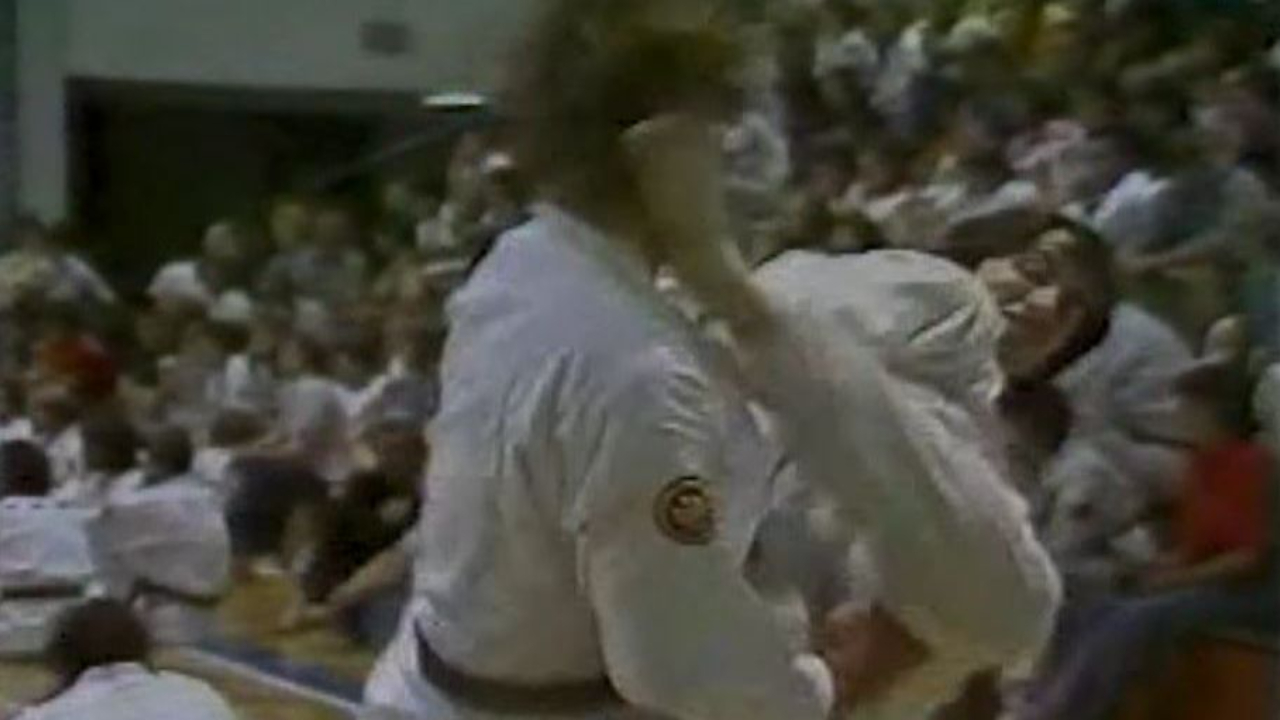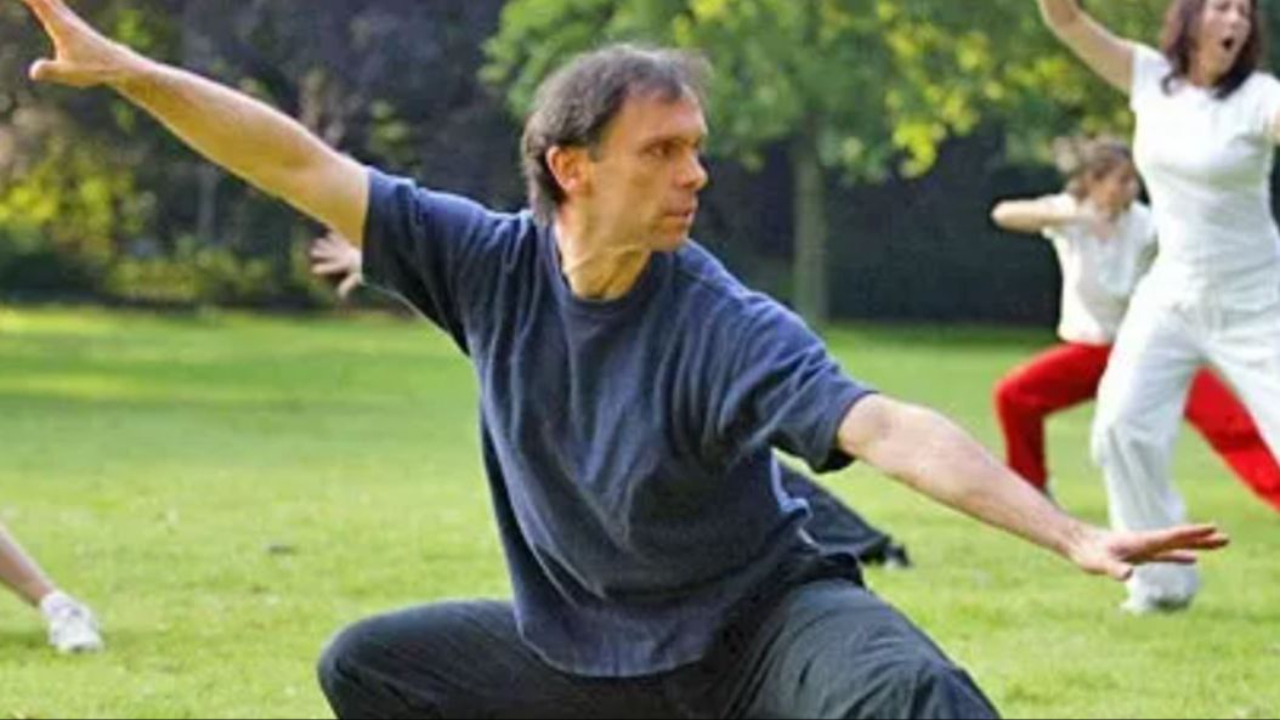One Bagua Technique -- One Hour

During the past week, I've been dusting off a bagua form - the Cheng style "8 Palm Changes" form.
I work in a university, and late this afternoon I was waiting for the president to arrive for a meeting. Everyone else had gone home, so I waited in the secretary's office, practicing one bagua movement from the form. The movement is "Yin Yang Fish."
It involves very tight circle-walking -- so tight that it just looks as if you're spinning. I practiced the movement slowly, then fast, then slowed it down and analyzed it. I looked for blocks, strikes, and joint locks hidden in the movement and the changing positions of the hands.
I worked for one hour on this one movement, and I felt liberated. I felt as if I was truly studying the art.
Too often, we believe that quantity of techniques is the goal. The more techniques we learn, the better.
That isn't necessarily true. Sometimes, you must take one technique--one movement--and unlock its secrets. Study the body mechanics, the shifting ...
Conditioning at a Higher Level

During the past three weeks, I've had the toughest workout sessions since I was on the track team in high school.
I began working out with a personal trainer at a fitness center in the Tampa Palms neighborhood.
James Adams has been a personal trainer for about three years. He's friendly and he knows his stuff. During the first few sessions, he's focused on core strength. It's clear that I need it.
When I was running the school in the Quad Cities, I spent so much time on teaching and marketing that my training fell off a cliff. I was also putting in 55 hours a week on my job, including the commute. Between job, the school, and my cute young wife, I didn't have time to train privately. I didn't feel good. I looked like I was in good shape, but I knew I wasn't from the way the old body felt. These photos were taken tonight, and show James coaching me through a core exercise where you grip the balance wheel and roll your hips on the fitness ball. Using the core muscles, you maintain c...
With the Internal Martial Arts It Has To Be Shown

I've studied several arts since 1973 -- Shaolin, wushu, taekwondo, boxing -- and attained ranks in Shaolin (brown belt) and TKD (green belt) before finding the internal arts.
The internal arts that I practice -- Hsing-I, Chen Tai Chi, and Bagua -- are the most difficult arts I've encountered. For a beginner, it's impossible to learn them properly from books, photos, or videos.
It Has To Be Shown (IHTBS).
My first encounter with top-level internal arts instructors (those with training in actual internal body mechanics) was Jim and Angela Criscimagna in Rockford, Illinois. They also introduced me to the Chen way of training and masters such as Chen Xiaowang and Ren Guangyi.
I met Jim and Angela after reading internal arts posts on the Internet that I didn't understand, using terms I'd never been taught. One hour after training with Jim for the first time, I drove away from Rockford realizing that I had to start over.
Not everyone can make that decision. We invest a lot of time, mo...
Sparring Strategy Against Kickers

I love to teach, and I like to use this blog as a teaching tool. I want visitors to walk away with information they can use in their practice. Here is a fighting tip that can work on the street, but since I don't get in many fights (I think my last real fight was 1970 in high school), I have to do tournaments.
Tournament sparring isn't real combat, but even point sparring teaches you strategies and timing that you would need on the street. I love tournament sparring. And believe me, it gets rough in there. In black belt divisions, you often have to make contact to get the point.
In the internal arts, particularly Chen tai chi, a kicker would be at a disadvantage. Trap the kick and take the kicker to the ground. But in most tournament sparring, you can't do that.
No problem.
Here's a strategy that will help you defeat martial artists who like to use kicks. I've found that a fighter who uses mainly kicks are not often well-rounded fighters. I've never understood styles that won't ...
Misdirection is Important in Sparring and Fighting

Yeah, that's me nailing this poor guy in the face with a hook kick. I was 27 years old competing at a tournament in 1980 sponsored by my first teacher, Grandmaster Sin The. I still use the hook kick in tournaments, even at my advanced age, because as one judge laughed a couple of years ago after I nailed a guy with it -- "that's sneaky."
As anyone who has purchased my sparring DVD knows, I believe in being a well-rounded fighter, using both hands and feet. I can score with either, and I use both to misdirect my opponent.
Whether in tournaments or in a self-defense situation, you should try to put your opponent at a disadvantage by making him think you're going somewhere you aren't. In the photo above, I had only been kicking at waist level. I'd thrown several side kicks at this guy and he had blocked them. He was very good at the reverse punch and had already scored.
But he was holding his hands down and leaving his head open. It happens all the time. So, as he expected another si...
What is a Black Sash or a Black Belt Worth?

In December 2000, a kung fu teacher from China named Master Wang held a seminar at my friend John Morrow's school in Moline. Several students showed up to study a variety of kung fu and tai chi techniques. I enjoyed meeting him, and it was obvious he had studied a while. Being a skeptic, I doubted that he was a real master. Anyone can come over from China with a little experience and fool us Americans. Many do.
But I still enjoyed the seminar. Master Wang had us practice different techniques with a partner, and he kept watching me. He said something to his interpreter, and the interpreter came over to me and said, "Master Wang says that you have kung fu."
Well, I was flattered. At the end of class, the interpreter told me that Master Wang was in town helping to build a Chinese restaurant for a friend, and he would like to train with me while he was there. He and the interpreter came over to my school twice a week for a few weeks. It was an interesting experience, and I learned as muc...
Tai Chi Humor from the Onion

The guys at the Onion are geniuses. Here's a funny headline and photo for a fake Tai Chi feature.
Chen Bing and the Skill of Relaxing Against Force in Taiji

Chen Bing is the nephew of Chen Xiaowang and Chen Xiaoxing. He has a college degree, and it doesn't take long to realize that he has a different style than his uncles--more involved, more accessible.
I met him in Chicago at a push hands seminar. He put one hand on my left shoulder, and I put my hand on his left shoulder. The object was to push the other person off-balance. Each time I pushed, he relaxed, and before I knew it I was falling off-balance.
It's the same thing that I felt when pushing hands with Chen Xiaoxing. When force comes in, it's met with relaxation and neutralization, not force. It's one of the things that really marks the difference between "external" and internal arts. I've rarely met a karate or TKD person, or even another kung fu person for that matter, who understands the concept of relaxed strength. Force comes in and you relax and deal with it.
This is a skill that I grapple with, trying to ingrain it into my reflexes. One of the most difficult things to do ...
Using Peng Jin and Ground Path while Moving Boxes

The North American moving guys didn't do their job right and didn't have any extra help to unload our furniture and household goods at our new home in Florida. They seemed to be moving in slow motion, and I quickly realized that if Nancy and I were going to get our stuff into our new home, I'd have to pitch in and help unload.
It didn't take long to learn that when you load heavy boxes onto a dolly and take it down a ramp, it can quickly get away from you.
So I applied tai chi principles and maintained the ground path and a sense of "peng" throughout the process. By maintaining the ground and peng while stepping backwards, I kept the dolly from coming down too fast and was able to control it easily, with much less physical effort.
Tai Chi principles can be used in many day-to-day activities, from opening heavy doors to lifting and carrying heavy items. I was once told to imagine moving as if your dan t'ien was being pulled along a level plane. I tried that while running and it made ...
The Best Thing that Happened to This Martial Artist

I've been writing about people who have been important to our school during this emotional time when we close it down and move South. There are people I haven't saluted due to time limitations--people like Vicky Arratia, Deb Thompson, Gary Whitcanack, Eric Schlichte, Xixuan and Conan Collins, Colin Frye, and of course Kim and Chris Miller. There are many more, too.
Since 2002, however, the most important person of all has been my wife and best friend Nancy. I've never known a woman like her. We started dating in August of 2002. By January, she started into the tai chi class and loved it. As time went on, she encouraged me to buy the building for our school. She got in there and painted and worked so hard.
She also encourages my tournaments and enjoys the road trips. The picture above was taken at a Chicago tournament after I won the gold medal in Advanced Hsing-I forms.
Having Nancy in the classes gave me someone to flirt with, and I enjoyed using her as a "dummy" to demonstrate fig...

